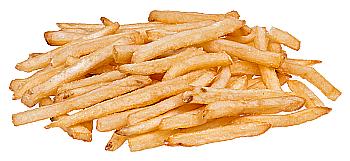Seven Important Chemical Separations
May 19, 2016
Good
chemists supposedly make good
cooks, since
cooking and
chemistry have many things in common. You need to select the correct
ingredients,
measure them carefully, choose the right
utensils and
containment vessels, and process your mixtures at the proper
temperature for the proper time. For an
analytical touch, you even sample the product at stages and adjust things accordingly.
This cooking-chemistry
analogy has become more concrete of late with the emergence of
molecular gastronomy. Molecular gastronomy, as defined in an early article on the topic in a
publication of the
Royal Society of Chemistry, is "...the application of
scientific principles to the understanding and improvement of small-scale
food preparation."[1]
Physicists have been more associated with molecular gastronomy than chemists. The method was first described in 1799 by physicist,
Benjamin Thompson, also known as Count Rumford. It was named molecular gastronomy in 1988 by
Nicholas Kurti, a
University of Oxford physicist, and
Hervé This, a
French physical chemist.

A portrait of Benjamin Thompson, Count Rumford by Moritz Kellerhoven (1758-1830).
Thompson is best known for his 1797 experiments demonstrating the mechanical equivalent of heat. In those experiments, he showed that the friction of a blunt cannon boring tool could boil water in about two and a half hours.
(Accession no. 1332 of the National Portrait Gallery, London, via Wikimedia Commons.)
In 2011, physicist,
Nathan Myhrvold, along with Chris Young and Maxime Bilet, published the five volume cookbook,
Modernist Cuisine: The Art and Science of Cooking about scientific cooking. Myhrvold's interest in the topic was inspired by his failure to find any good information about
sous-vide cooking. Myhrvold is known, also, as a former
chief technology officer of
Microsoft and the co-founder of
Intellectual Ventures.
Reactions are the heart of chemistry. If I look beyond the
oxidation reactions that
sustain life, I can name the
Maillard reaction as my favorite reaction. This
chemical reaction between
amino acids and
sugars is a part of cooking chemistry, since it's the reaction that imparts so much
flavor when certain foods are
browned in cooking. This reaction flavors such things as
breads,
biscuits and
French fries.

"Do you want fries with that?"
(Photo by Evan-Amos, via Wikimedia Commons.)
This reaction was first described in 1912 by the French chemist,
Louis-Camille Maillard.[3] The reaction happens rapidly at about 140-165
°C (284-329
°F), and it produces hundreds of different flavor compounds. An
alkaline environment, such as a coating of
lye on
pretzels, accelerates the reaction, giving a deep brown color.
Quality control is important, since
acrylamide, a possible
carcinogen, can be produced at high temperatures.
While food might be close to my
heart (as in "
the way to a man's heart is through his stomach"), there is more to chemistry than just chemical reactions.
Chemical separations are methods of converting a mixture into
products, called
fractions, at least one of which is enriched in a chemical of interest.
David S. Sholl and
Ryan P. Lively, both
professors in the
School of Chemical and Biomolecular Engineering of the
Georgia Institute of Technology (Atlanta, Georgia), have just published their opinion on the seven such chemical separations that would qualify as world changing.[4-5]
As Ryan Lively, study co-author and an assistant professor in Georgia Tech's School of Chemical & Biomolecular Engineering, explains,
"Chemical separations account for about half of all U.S. industrial energy use... Developing alternatives that don't use heat could dramatically improve the efficiency of 80 percent of the separation processes that we now use."[5]
Sholl and Lively chose the following as the seven most important chemical separations:
Hydrocarbons from
petroleum,
uranium from
sea water,
alkenes from
alkanes,
greenhouse gases from dilute emissions,
rare earth metals from
ores,
benzene derivatives from each other, and trace
contaminants from water. They write that the present separation methods are responsible for 10-15% of the
world's energy consumption.[4]
Hydrocarbons from petroleum
Uranium from sea water
Nuclear power is a
carbon-free energy source, but you need uranium fuel for this option. As it turns out, there are more than four billion
tons of uranium dissolved in seawater. Chemical separation of uranium from seawater is complicated by the chemically-similar elements
vanadium and
cobalt. There have been small scale tests of improved processes, but much work is still needed to be done.[5]
Alkenes from alkanes
Alkenes such as
ethylene and
propene are used to produce certain
polymers. The total annual production of alkenes is greater than 200 million tons, and an energy-intensive step is the separation of alkenes from their
single-bonded counterparts, such as ethylene from
ethane.
Membranes are a potential energy-saving separation technology, but an industrial-scale plant would require a million
square meters of membrane.[5]
Greenhouse gases from dilute emissions
Presently,
scrubbing of
carbon dioxide and hydrocarbon
stack emissions is done by reaction with liquid
amines, with an additional heating step required to recover the amine to its initial state. A better method is needed.[5]
Rare earth metals from ores
The
rare earth elements are used in the
powerful magnets that enable
motors and
actuators for many applications, and also for some
catalysts. They tend to occur together in
nature and are chemically similar, so their separation from ores is difficult.
Benzene derivatives from each other
Benzene and its derivatives are used in the production of many
materials,
solvents and
fuel additives.
Distillation columns, similar to the petroleum example above, are now used to separated these. About 50 gigawatts of energy are used for this purpose annually. Membrane and
sorbents could be developed for a more energy-efficient process.
Trace contaminants from water
As the
Flint, Michigan, water crisis reminds us, we sometimes must
purify our water before drinking. In many parts of the world, water desalination is an important process, and it's both energy and
capital intensive. Some membrane processes are now used, but research is needed to solve problems such as
fouling, and to make desalination more energy efficient.
Says co-author David Sholl,
chair of Georgia Tech's School of Chemical & Biomolecular Engineering,
"We wanted to highlight how much of the world's energy is used for chemical separations and point to some areas where large advances could potentially be made by expanding research in these areas... These processes are largely invisible to most people, but there are large potential rewards - to both energy and the environment - for developing improved separation processes in these areas."[5]
References:
- Cooking with chemistry, Chemistry in Britain (Chemistry World), no. 10 Royal Society of Chemistry, October 2003.
- Nathan Myhrvold, Chris Young, and Maxime Bilet, "Modernist Cuisine: The Art and Science of Cooking," The Cooking Lab, March 7, 2011, ISBN 978-0982761007, 2438 pp. (Modernist Cuisine Web Site).
- L-C Maillard, "Action des acides amines sur les sucres: Formation des melanoidines par voie methodique," Comptes Rendus, vol. 154 (1912), pp. 66-68.
- David S. Sholl and Ryan P. Lively, "Seven chemical separations to change the world," Nature, vol. 532, no. 7600 (April 28, 2016), pp. 435-437. This is an open access article with a PDF file available here.
- John Toon, "Researchers List 'Seven Chemical Separations to Change the World'," Georgia Institute of Technology Press Release, April 27, 2016.
Permanent Link to this article
Linked Keywords: Chemist; cooking; cook; chemistry; ingredient; measurement; measure; food preparation utensil; bowl; vessel; temperature; analytical chemistry; analogy; molecular gastronomy; academic publishing; publication; Royal Society of Chemistry; science; scientific; food preparation; physicist; Benjamin Thompson; Nicholas Kurti; University of Oxford; Hervé This; France; French; physical chemistry; physical chemist; portrait; Count Rumford; Moritz Kellerhoven (1758-1830); experiment; mechanical equivalent of heat; friction; cannon; boring; boring tool; boiling; boil; water; Wikimedia Commons; Nathan Myhrvold; Modernist Cuisine: The Art and Science of Cooking; sous-vide; chief technology officer; Microsoft; Intellectual Ventures; chemical reaction; oxidation reaction; respiration; sustain life; Maillard reaction; amino acid; sugar; flavor; browning; brown; bread; biscuit; French fries; Evan-Amos; Louis-Camille Maillard; Celsius; Fahrenheit; alkalinity; alkaline environment; lye; pretzel; quality control; acrylamide; carcinogen; heart; the way to a man's heart is through his stomach; separation process; chemical separation; product; fraction; David S. Sholl; Ryan P. Lively; professor; School of Chemical and Biomolecular Engineering; Georgia Institute of Technology (Atlanta, Georgia); industry; industrial; energy; heat; efficiency; hydrocarbon; petroleum; uranium; sea water; alkene; alkane; greenhouse gas; rare earth element; metal; ore; benzene; contamination; contaminant; world energy consumption; distillation; barrel; crude oil; gigawatt; vapor; condensation; condense; nuclear power; low-carbon power; carbon-free energy source; ton; vanadium; cobalt; ethylene; propene; polymer; single-bond; ethane; membrane; square meter; carbon dioxide; flue-gas stack; stack emission; amine; rare-earth magnet; electric motor; actuator; catalysis; catalyst; nature; material; solvent; fuel additive; fractionating column; distillation column; sorbent; Flint, Michigan, water crisis; purified water; capital cost; fouling; chairman; research; environment.